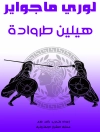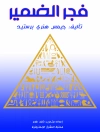This book clarifies the advent of Liangzhu Culture and analyses the morphology, structure and internal social organization of grass-root settlements, medium-size settlements and the ancient city of Liangzhu, as well as the religious beliefs, ideology and power mechanisms represented by jade. Further, the book explains how the low-lying location and humid environment in the water-net plain area prompted the creation of man-made platforms or pillars, forming small and densely settled residential areas, and ultimately the water villages of southern China. Developments between man and nature accelerated the process of civilization, leading to the polarization of social classes and pyramid-shaped residential structures containing cities, towns and villages. Offering unique insights into the social vitality and structure of Liangzhu society, the book is one of the most important academic works on interpreting the origins of Liangzhu Civilization and investigating Chinese Civilization.
Tabela de Conteúdo
What was Liangzhu?.- The Background and Driving Factors behind the Formation of Liangzhu Culture.- Earliest Liangzhu.- Settlement Rank and Society.- Power and Belief.
Sobre o autor
Ningyuan Wang is a researcher at Zhejiang Provincial Institute of Cultural Relics and Archaeology. Having completed his studies at the School of History, Nanjing University, his main research interest is in archaeology. He has led several archaeological excavation projects in, e.g. Xianmiaotan, Haiyan county, Yaojiashan, Jiaxing city and Zhili, Anji county. He is currently responsible for the long-term research excavation of a peripheral drainage system at the Liangzhu historical site. In addition, he has published extensively in his field, including
The Remote Village – Settlements and Inhabitation Pattern of Liangzhu Culture and
From Village to Royal City.












